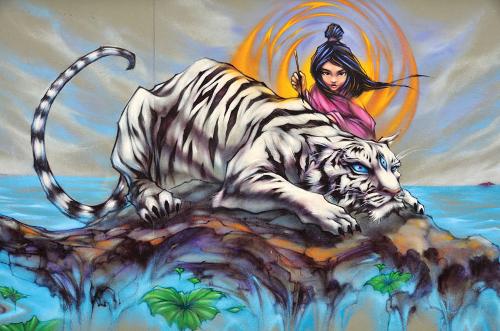.jpg)
Sylvia Ross invites you to look closer, through the glaze of her lenticular photographs into a world you walk past every day, and ignore: the world of pigeons. These birds, accustomed to being labelled "pest", are brought into the limelight in this exhibition, titled Feral.
Pigeons can be found in almost every country on this planet and have been able to adapt and thrive in all conditions, living side-by-side with the locals. It may not seem obvious at first, and even later it may be natural for us to deny it, but pigeon and human habitation are two parallel worlds.
When you gaze at each pigeon's portrait, the holographic surface of the lenticular photograph draws you in closer to observe the bird, but also serves to distract you, with reflections under the gallery lights. A reflection of yourself. And of others around you in the room.
Ross’s works bring out the individual markings of each bird and peculiar behaviourisms in an almost three-dimensional effect. The glossy surface highlights their colours, speckles and silky plumes. Alongside some photographs are unique titles for the portraits, bringing together the pose with the personality. 'Francisco Goya and His Identical Black Twin’ and ‘(Sir) Walter (Pigeon)’ were crowdpleasers; surrounded by the pink lady, a brown bachelor and three white graces.
They are caught in moments of curiosity and boredom. Performing their everyday duties: preening, strutting and resting. You feel as if you have stepped into a National Geographical documentary, peering closer through a telephoto lens to catch a rare moment or amusing mannerism.
At the centre of the room are a cluster of common, garden-variety pigeons laid out on the floor to make up the work Waiting for George. The series was photographed over two years in St James Park, London between the royal wedding of Prince William and Catherine Middleton, and the birth of their son George. London is just one of eleven cities across the globe where Ross has captured these images. As you look across the room, there is no way to differentiate the country of origin of these pigeons, other than the wall label accompanying each work.
Pigeons are global citizens but Ross brings in a local colonial context to her exhibition with the inclusion of two assemblage works of Australian paraphernalia. They stand tall in glass displays and proudly show off articles that our society values: the rarity of an emu egg, the profitability and industry of sheep farming, and the nation’s heroes - kangaroo, emu and the Commonwealth star – around a model of the Sydney Opera House in a snow globe.
Who determines that the kangaroo is worthy of our national emblem while the native pigeon is downgraded to plebeian of the animal kingdom? As long as it is in human nature to organise our environment into schemas, pigeons will remain unclaimed, displaced and lacking identity. Forever pigeonholed as the forgotten species.
...
As you walk upstairs you cross into a realm of introspection, greeted by a single row of floating forms on white canvases and paper. The quiet and peace of seemingly naked canvases are rudely disrupted by gaping gashes of solid earthy colours which split through the centre of each square artwork. From afar they are unabashed, unapologetic, destructive. There is an invisible force bursting open through the seams.
As in nature, there is no logical order dictating this exhibition. But there are patterns and repetitions that tie the works together. Raft explores the organic form of two thin triangles meeting at their points in the centre of a globe. The shape is abstract but hints at the familiar - the point of a syringe piercing the membrane of a cell under a microscope, the peeking flesh of a closed oyster shell, or the cross-section of a crystal.
Close-up you can observe layers of complexity in the works. In particular Raft experiments with the white space surrounding his bold forms, playing with shades and textures of white. Some paintings from the ‘invisible force’ series feature line work and thin washes to achieve an effect similar to the flowing raked lines of a Zen garden. The exploration of white background spices up Raft’s abstracts with a subtler energy and shapes the overall mood of individual pieces.
Raft attempts to explain his works with this quote, “The power that exists in all beings in the form of illusion”. You will find a sense of peace when you stop trying to find meaning in his works and simply enjoy the meandering senses that pass through you as you contemplate the expressive shapes.












